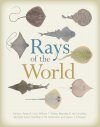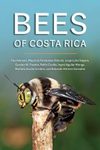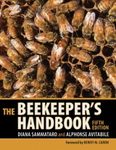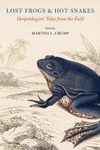World / Checklist Flora / Fauna Identification Key
By: Peter R Last(Editor), William Toby White(Editor), Marcelo R de Carvalho(Editor), Bernard Séret(Editor), Matthias FW Stehmann(Editor), Gavin JP Naylor(Editor), Lindsay Marshall(Illustrator), JD McEachran(Foreword By)
790 pages, colour photos, colour illustrations, colour distribution maps
![Rays of the World Rays of the World]()
Click to have a closer look
About this book
Contents
Customer reviews
Biography
Related titles
About this book
Rays are among the largest fishes in the sea and have colonized all oceans. The first cousins of sharks, rays evolved from early Mesozoic or late Paleozoic shark-like ancestors. They also share with sharks many life history traits – all are carnivores or scavengers – and a multitude of morphological and anatomical characters, such as their skeletons built of cartilage. There are 6 families and 633 valid named species of rays, but additional undescribed species exist for many groups. Our knowledge of many of the ray species is based on only a small number of individuals, and few of them have been researched well enough to gain even a basic understanding of their biology and life history. The insights gained from molecular analyses of more than three-quarters of living ray species, combined with reinvigorated morphological investigations, have led to many changes in both ray classification and the underpinning species diversity. The recognition of whole new families and genera of rays, and many newly described species, have resulted from this research.
In the last century, growth in the trade of rays for food, fins, leather, and curios has fueled increasing prices and demand for them in many countries. This has driven significant increases in ray take by commercial fisheries globally, particularly in the tropical Indo-Pacific. The largely unconstrained growth in ray catch, low productivity of most ray species, and general lack of management of their fisheries has lead to growing concern over the sustainability of stocks throughout the world. Rays of the World is the first complete pictorial atlas of the world's ray fauna and features paintings of more than six hundred species by the fish artist Lindsay Marshall. This comprehensive overview documents the world's ray fauna and promotes wider public interest in the group. It also provides general identifying features and distributional information about this iconic, but surprisingly poorly known, group of fishes.
A valuable collection of paintings of all living rays (as well as sharks) has been compiled as part of a multinational research initiative (Chondrichthyan Tree of Life Project) to gain a better understanding of the diversity and evolution of this group. Images sourced from around the planet have been used by the artist to illustrate all of the rays found in oceans and some tropical freshwaters of the world.
Contents
Foreword
Acknowledgements
Introduction
Phylogeny and classification of rays
Human interactions
Ray conservation
About this book
Glossary
Key to families of living rays
PRISTIDAE (Sawfishes)
RHINIDAE (Wedgefishes)
RHINOBATIDAE (Guitarfishes)
GLAUCOSTEGIDAE (Giant guitarfishes)
TRYGONORRHINIDAE (Banjo rays)
PLATYRHINIDAE (Fanrays)
ZANOBATIDAE (Panrays)
NARCINIDAE (Numbfishes)
NARKIDAE (Sleeper rays)
HYPNIDAE (Coffin rays)
TORPEDINIDAE (Torpedo rays)
RAJIDAE (Skates)
ARHYNCHOBATIDAE (Softnose skates)
GURGESIELLIDAE (Pygmy skates)
ANACANTHOBATIDAE (Legskates)
HEXATRYGONIDAE (Sixgill stingrays)
GYMNURIDAE (Butterfly rays)
DASYATIDAE (Stingrays)
POTAMOTRYGONIDAE (Neotropical stingrays)
UROTRYGONIDAE (Round rays)
PLESIOBATIDAE (Giant stingarees)
UROLOPHIDAE (Stingarees)
MYLIOBATIDAE (Eagle rays)
AETOBATIDAE (Pelagic eagle rays)
RHINOPTERIDAE (Cownose rays)
MOBULIDAE (Devilrays)
Suggested reading
Checklist of the world’s rays
Scientific names index
Common names index
Customer Reviews (1)
-
The first book that summarizes all known rays
By
Horst
25 Jan 2017
Written for Hardback
This synopsis contains all 633 species of rays of the world known today. For the first time each species is shown in a coloured painting accompanied by a distribution map and informations on identification, colour, size, habitat and biology. This enables everybody to identify all specimens seen in the field or in aquaria. The inclusion of many new species, new generic or specific names or new geographical distribution limits makes a revision of the own photographic collection as well as a critical inspection of all marine field guides necessary.
Besides of the extensive informations I have to note two imperfections: the illustrations are quite faint and not as bright as they may be seen under water or in aquaria and some of the distribution maps don’t include areas, where species occur like Torpedo sinuspersici at the Maldives, Pastinachus ater in the Red Sea etc.
4 of 4 found this helpful
-
Was this helpful to you? Yes No
Biography
Peter R. Last is a senior principal research scientist with CSIRO National Research Collections and former head of the Australian National Fish Collection, Hobart, Tasmania. William T. White is an ichthyologist and the senior curator at CSIRO’s Australian National Fish Collection. Marcelo R. de Carvalho is a professor in the Department of Zoology at the University of São Paulo. He is also a Research Associate of the Department of Ichthyology at the American Museum of Natural History. Bernard Séret is a consultant ichthyologist and international authority on sharks and rays, formerly at the National Museum of Natural History in Paris. Matthias F. W. Stehmann is a retired ichthyologist at the Zoological Museum of Hamburg. Gavin J. P. Naylor is a molecular biologist and professor of biology at the College of Charleston. The artist, Lindsay Marshall, a respected scientific illustrator with a doctorate specialising in shark morphology, understands the need for technical excellence and authenticity in natural history art.
World / Checklist Flora / Fauna Identification Key
By: Peter R Last(Editor), William Toby White(Editor), Marcelo R de Carvalho(Editor), Bernard Séret(Editor), Matthias FW Stehmann(Editor), Gavin JP Naylor(Editor), Lindsay Marshall(Illustrator), JD McEachran(Foreword By)
790 pages, colour photos, colour illustrations, colour distribution maps



























![Lo Squalo Bianco nei Mari d'Italia [The White Shark in the Seas of Italy]](http://mediacdn.nhbs.com/jackets/jackets_resizer_medium/17/178659.jpg?height=150&width=96)
![Guia de Identificación de las Mantas y Rayas Diablo del Mundo [Field Guide to Manta & Devil Rays of the World]](http://mediacdn.nhbs.com/jackets/jackets_resizer_medium/26/268159.jpg?height=150&width=212)











